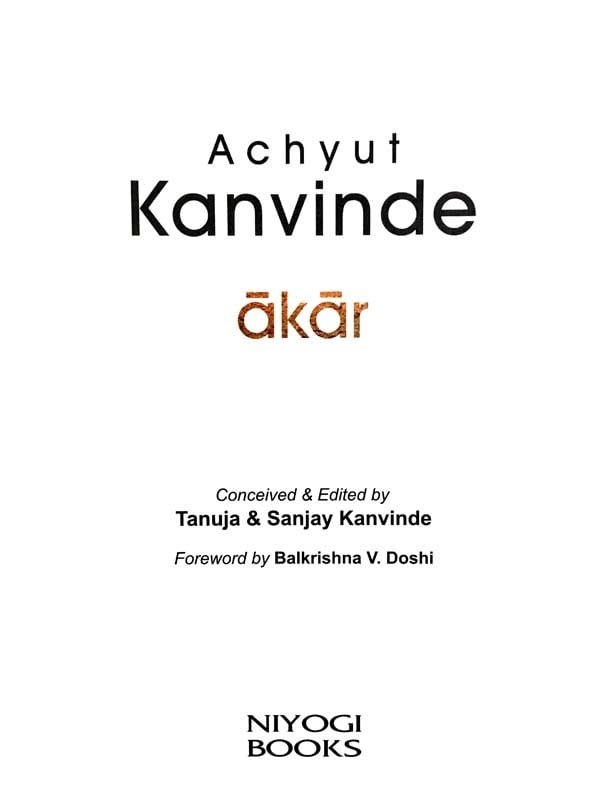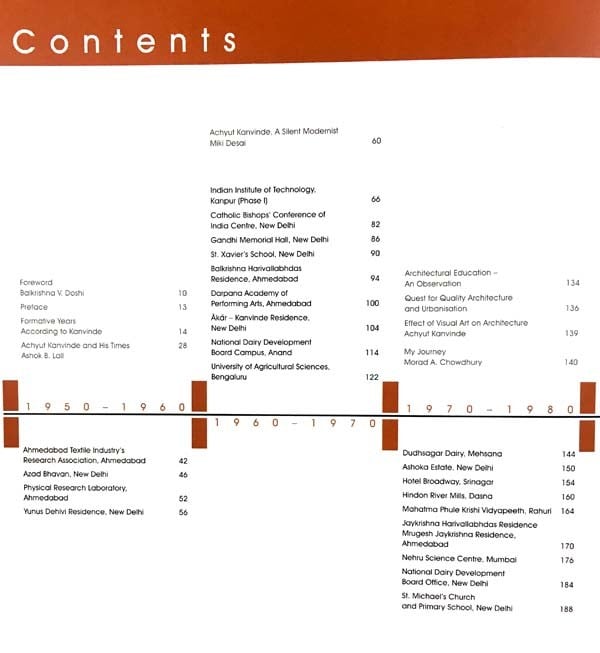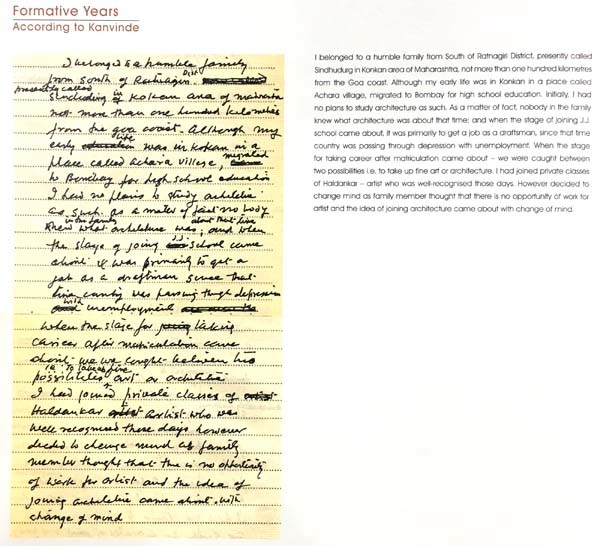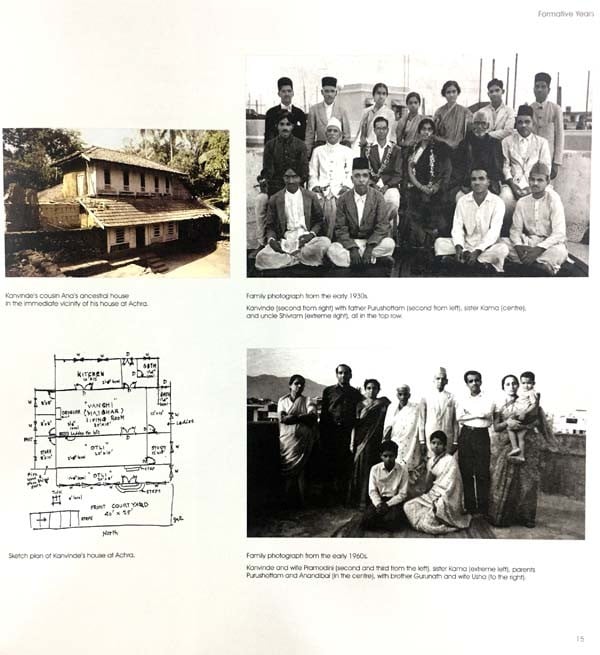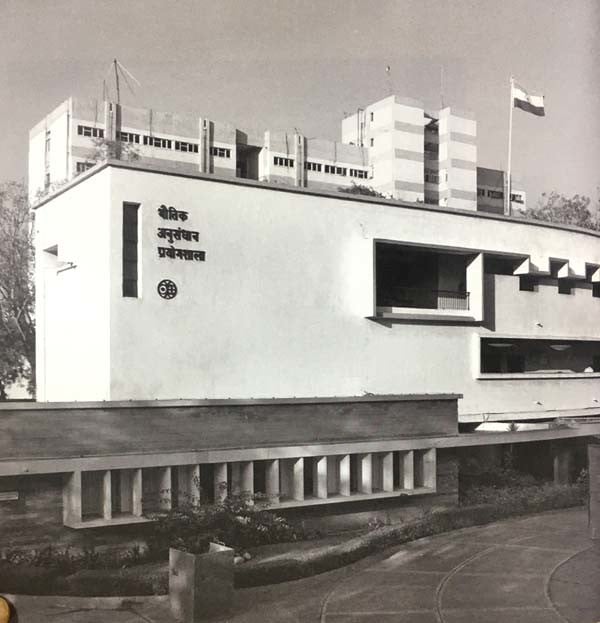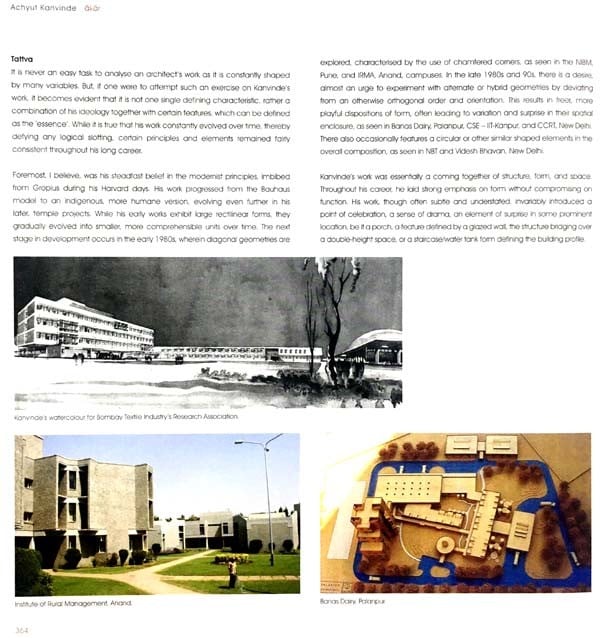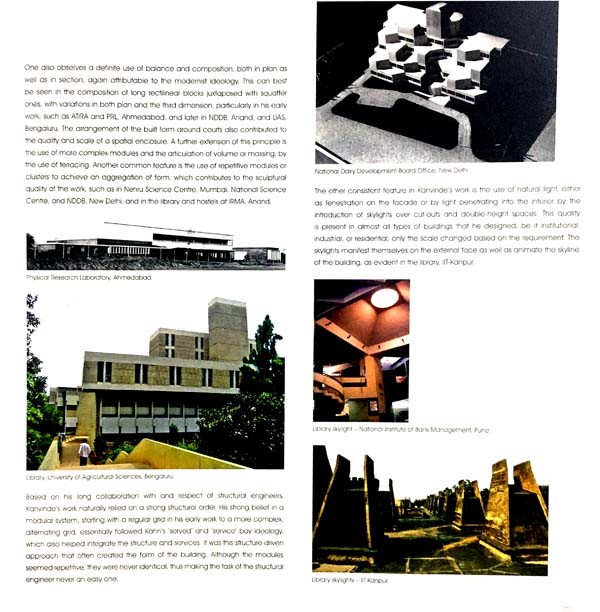
Achyut Kanvinde Akar
Book Specification
| Item Code: | AZE296 |
| Author: | Tanuja and Sanjay Kanvinde |
| Publisher: | NIYOGI BOOKS |
| Language: | ENGLISH |
| Edition: | 2017 |
| ISBN: | 978938525608 |
| Pages: | 460 (Throughout B/W Illustrations) |
| Cover: | HARDCOVER |
| Other Details | 11.50x11.50 inches |
| Weight | 3.13 kg |
Book Description
Of the large number of projects designed under the aegis of Kanvinde Rai & Chowdhury, this book deals primarily with 45 selected works that the authors felt best represent the firms oeuvre. A compilation of unrealised projects, research studies, competitions, working drawings, and an exhaustive chronology complete the monograph.
Conceived and edited by Tanuja and Sanjay Kanvinde, Akär contains several articles written by Achyut Kanvinde in addition to essays by professionals and academicians - Ashok Lall, Narendra Dengle, Miki Desai, and Sanjay Kanvinde. The Foreword for the book has been written by renowned architect and Kanvinde's contemporary Dr B.V. Doshi. The design concept and layout for the monograph has been developed by Sunita Kanvinde.
This major publication deals, in depth, with the works of Kanvinde and is primarily aimed as a resource for students, research scholars, and the architectural fraternity at large.
When I returned from Paris in 1954, Karvinde heard about my going to Ahmedabad to supervise Corbusier's buildings. He then offered me to join him and prepare an alternative scheme for the Atomic Energy Complex competition. So many young architects, searching for a career support, found similar offers from him. Such encouraging gestures of generosity are rare in our profession, something unheard of in present times.
This monograph on Achyut Kanvinde has been in the making for a long time. It has seen many false starts. In 1996, when Kazi Ashraf and James Belluardo were curating the exhibition An Architecture of Independence: The Making of Modern South Asia. Belluardo spent considerable time with the reticent Kanvinde for selecting the exhibits while also analysing his work. To understand Kanvinde's psyche, several people had requested him to pen his story - a task that he initiated, starting with his formative years, the setting up of his practice, and his recollections of interactions with several known personalities, culminating with an assessment of his work. These notes somehow remained neglected, and although Kanvinde would have liked to see his work published, this was never explicitly expressed. While going through his papers for the monograph, we were delighted to come across these articles, which we decided to reproduce with minimal corrections while retaining their essence.
**Contents and Sample Pages**
